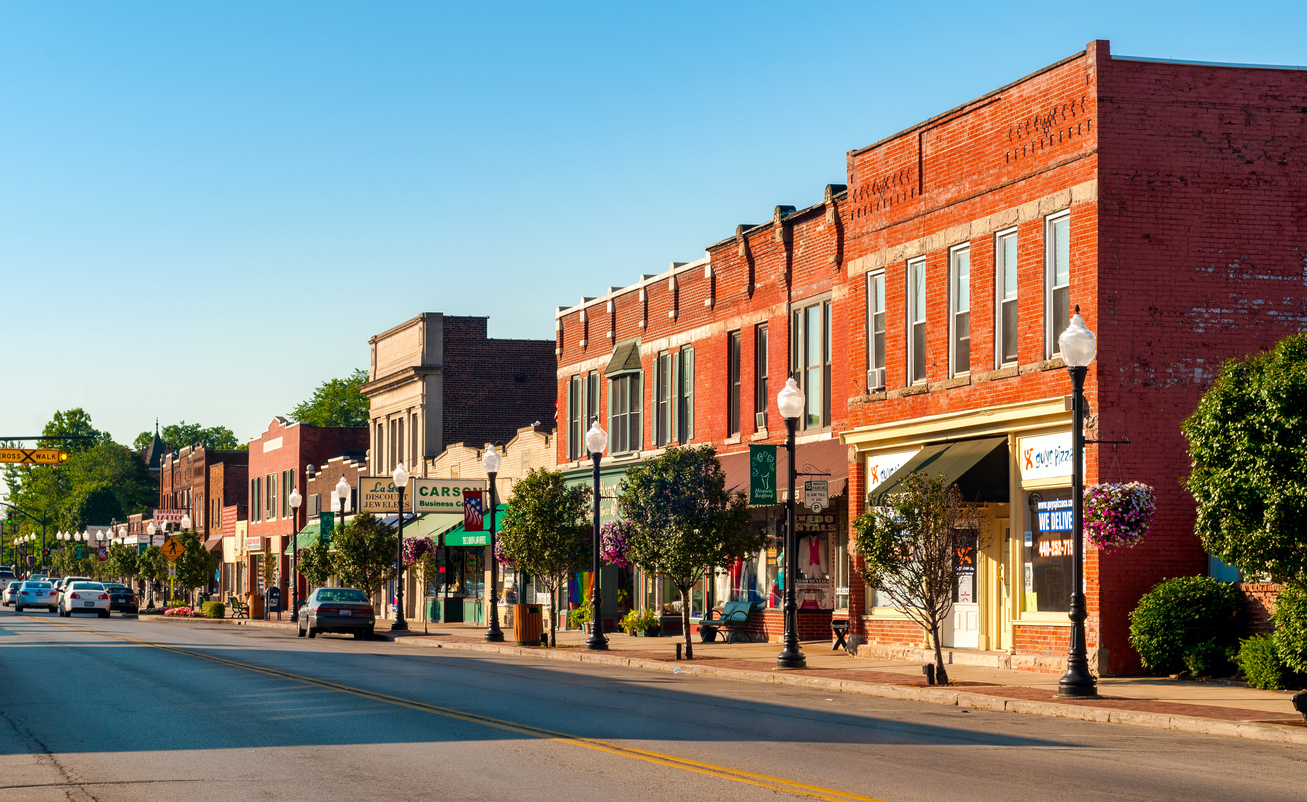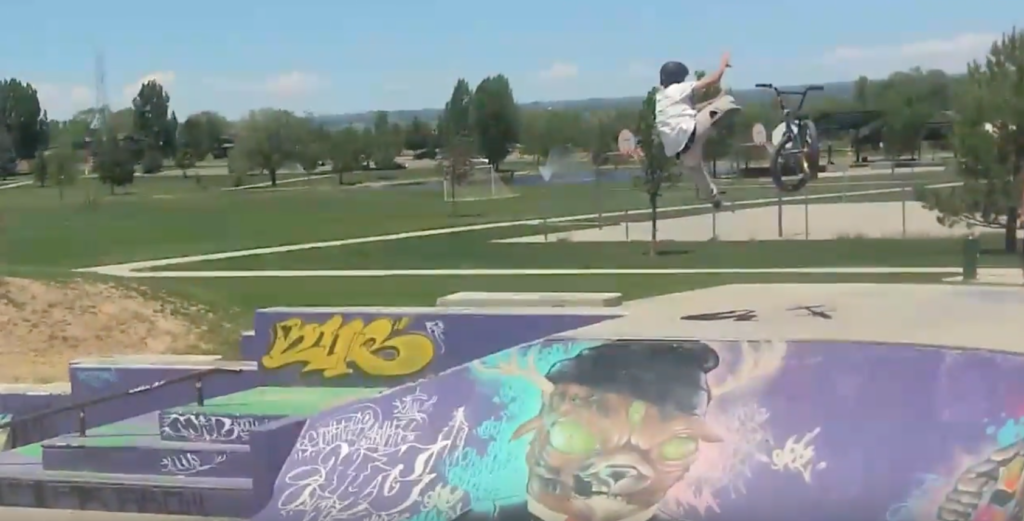
Sustaining Small Town
America
Sustaining Small Town
America
Small towns learn how to revitalize their communities while preserving what matters most.
With a population of just 566, the tiny town of Weston, Vermont, is the quintessential New England village. Nestled in the Vermont mountains, the town enjoys a long tradition among the families who have lived there for generations.
So it was a shock to many in the community when, in the early 1970s, a proposal for an animal safari amusement park, to be named “Wildlife Wonderland,” came before the town’s Planning Commission for consideration. The proposal divided the town, ending friendships and creating hard feelings, with many seeing the construction of the park as out of character for this New England village.
“The scars on the side of the mountain healed faster than the scars in the community ever did,” says Lyman Orton, who was on the town’s Planning Commission at the time.
The project was ultimately approved in modified form and stayed in business for only a few short months. But while the park was short-lived, it left a lasting impression on Orton. Only a few years earlier, the Planning Commission had held a series of public hearings to revise the town’s Town Plan and Zoning Code. Yet it was clear that town officials had failed to understand what mattered most to residents. “We thought we had captured the pulse of the residents, but Wildlife Wonderland proved otherwise,” Orton said.
Weston was not alone in its experience. The 1970s and 1980s were a time of active development in Vermont, when developers who challenged Town Plans across the state frequently prevailed. Residents were often shocked that what was happening to their towns did not fit the idealized visions of what they believed their towns should become. The continuing conflicts within communities convinced Orton that town planning processes needed reform.
A Knight Foundation study found a significant correlation between community attachment and economic growth.
As the proprietor of the Vermont Country Store, a Weston landmark and mail order business begun by his parents in 1947, Orton had deep roots in Weston. His intimate connection to small-town life and his experience on the town’s Planning Commission helped fuel a passion for ensuring that residents have a better say in planning their communities’ future. In 1995, Orton founded the Orton Family Foundation, a private operating foundation with a mission to build stronger, healthier, and more economically vibrant small cities and towns across America.
The foundation’s work is supported by an approximately $2.5 million annual budget and a full-time staff of 13. The foundation conducts research, publishes books and papers, and has created innovative software for use by town planners and residents. These tools include “CommunityViz,” a groundbreaking program that helps communities assess the impact of development. The foundation also spent a decade on intensive field study and invested more than $10 million to develop the Community Heart & Soul® model of community development, a four-phase, 11-step model that typically takes two years to complete.
Community Heart & Soul actively seeks the collective wisdom of all residents, including those whose voices are often missing. This resident-driven model takes into account both the unique character of a town and the deep emotional connection of the people who live there. These collective insights then guide the town in its decision-making and development of comprehensive and master plans, downtown plans, and land-use codes. Today, 35 towns are either in the process of following the Community Heart & Soul model or have completed a project.
In the towns that have completed Community Heart & Soul projects, the results have been transformational. For example:
- Economic Redevelopment.
Biddeford, Maine (pop. 21,000), once nicknamed “Trash Town” for its hulking downtown industrial incinerator, successfully revitalized both its economy and its aging population. Information gathered from residents during the Community Heart & Soul process empowered the City Council to appropriate $6.7 million to tear down the incinerator – a bold move that eliminated 80 jobs and a major taxpayer but also precipitated the town’s turnaround. Today, Biddeford’s downtown has $90 million in approved projects in the pipeline, including a $50 million boutique hotel and $15 million in affordable housing. And of the 1.6 million square feet of once mostly vacant space in a former textile mill downtown, all but 400,000 square feet are occupied.
- Community Engagement.
In Cortez, Colorado (pop. 8,500), Community Heart & Soul helped bring about the participation of voices that previously had gone unheard. For example, the town worked with the Ute Mountain Ute Tribe, who contributed to the design of a gateway sign at the southern entrance to town, nearest to their tribal lands, as a symbol of honor, respect and acknowledgment. Officials also improved their outreach to Hispanic residents and with youth, such as by giving young people full voting seats on the Parks and Recreation, golf, and library advisory boards. A designated graffiti wall in the skateboard park dramatically reduced town incidents of graffiti. The town also established a new way for developers to do business by encouraging them to meet, discuss, and resolve differences with neighbors well in advance of public hearings. Officials also created a plan for the town’s main street, a state highway, that set a precedent for collaboration between the town and state government.
- Cooperation Between Local Governments.
Residents in the town of Essex and the village of Essex Junction, Vermont (pop. 21,000), discovered a template through Community Heart & Soul for the civil resolution of thorny issues related to longstanding barriers to communication, governance, and a lack of cooperation between the two overlapping municipalities. Although the two towns have not agreed on a full merger, the two localities have since unified three local school districts and are gradually consolidating several municipal departments to improve efficiencies and save taxpayer dollars.

In Cortez, Colorado, the creation of a designated graffiti wall dramatically reduced incidents of vandalism. Image courtesy of the Orton Family Foundation.
What has happened in these Heart & Soul communities meshes with what the Knight Foundation found in its Soul of the Community study, which showed a significant correlation between community attachment and economic growth. The Knight report reinforces a basic tenet of Community Heart & Soul—that there is value in discovering and building from a foundation of what people love about their town and what matters most.
In his analysis of Community Heart & Soul towns, Doug Easterling, a professor of social sciences and health policy at Wake Forest School of Medicine, found that the process was a “positive disruptive force” that helped residents discover what they love about where they live so they can use it as a foundation for building their community’s future.
“There’s a lot about Community Heart & Soul that’s unique,” Easterling said. “Most of these community planning initiatives focus on visioning, strategizing, and creating action steps. These come out of a planning process with a facilitated group of people around a table. It’s very formal and structured. It’s contained. Heart & Soul comes up with a vision by looking at the past and what’s worth preserving and then looks forward. Information is gathered in such a decentralized way through gathering stories and then analyzing them to make Heart & Soul statements. That level of engagement I’ve never really seen before.”
At the Orton Family Foundation, we are excited to be introducing Community Heart & Soul to small cities and towns across the country and to work in partnership with organizations, such as the Pennsylvania Humanities Council, regional community foundations and local governments, that share our mission. As we’ve witnessed in towns across the country, a town is at its strongest, healthiest and most vibrant when it plans from its “heart and soul.”
David Leckey is Executive Director of the Orton Family Foundation.


